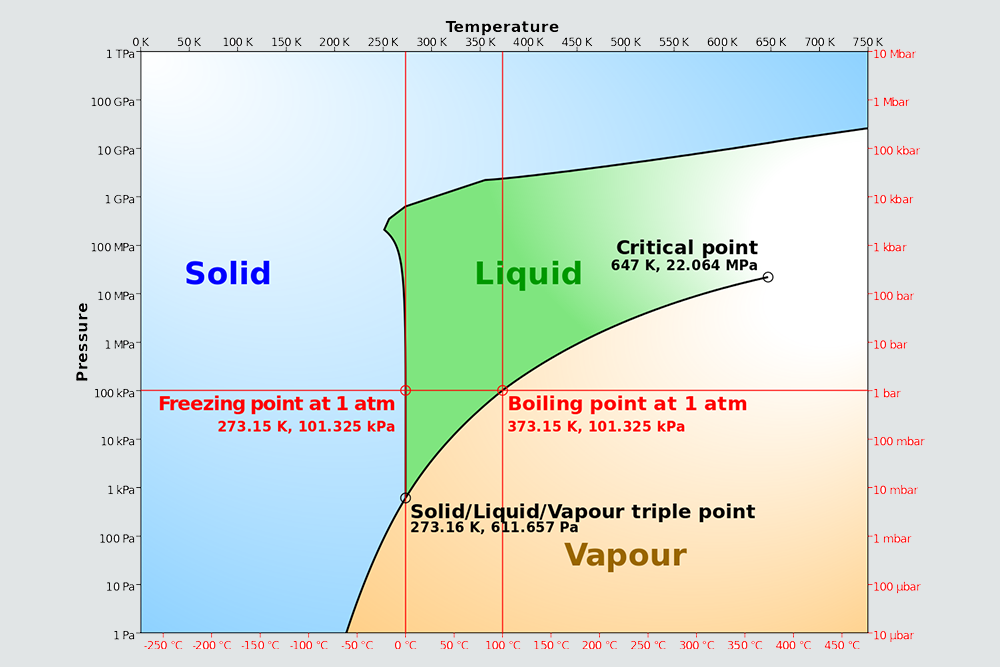Boiler season has started! As boilers get back online, we are reminded about some of our more challenging systems... There are a number of different touch points in boilers which can cause issues. Anywhere from pretreatment, to steam production, and blowdown. All of these areas and more need to be humming smoothly for optimal boiler longevity and efficiency. The following is a deep dive on steam flash.
Steam flash, in this context, is when the blowdown line in a boiler is subjected to water in its vapor state while a typical conductivity measurement is calibrated for water in its liquid state. When water turns into steam dissolved solids are deposited in the blowdown line which leaves undesired deposits in the line and on the probe. Additionally, the state change impacts the molecular behavior and would throw off traditional conductivity measurements.

Phase diagram for water
What causes the steam in the line? Assuming the skimmer line is at the right height, steam flash is most commonly caused by sudden pressure changes in the sample line. To dive a little deeper, reference the phase diagram pictured. Two factors dictate the state of water, pressure and temperature. Should we change either we can potentially change the matter’s state. Now let us analyze the typical blow down process on a timed sample blow down. During timed sample blowdown, at a predefined interval the boiler water’s conductivity is checked. To do this the controller opens a control valve which allows process water from the skimmer line to pass by the conductivity probe for a measurement. Then a decision is made based on the measured value. The boiler water is both hot and pressurized. Opening the control valve exposes atmospheric pressure to the process. This abrupt change in pressure can cause the sample line to instantly vaporize causing the issues mentioned previously, solid deposition in the sample line and an inaccurate conductivity measurement. Vapor will give a low conductivity measurement. Therefore, solids levels will rise in the boiler, these solids are eventually deposited in the sample line which fouls the probe until the scale build up creates a fake conductivity measurement.